
Editor’s note: Reprinted from the April 2022 issue of GCU Magazine. To view the digital version of the magazine, click here.
Story by Mike Kilen and Lana Sweeten-Shults
Photos by Ralph Freso
GCU Magazine
Teaching is a calling, every bit as much as nursing. But in the shadow of COVID-19, it feels as if that call has gone unanswered.
Even before the pandemic, schools struggled to find teachers to fill classrooms. Educators face so much more beyond teaching, from navigating students’ social-emotional concerns to dealing with behavioral problems.
The nursing profession has been battered, too, as the industry struggles with a nationwide shortage stemming in part from people living longer and a “silver tsunami” of nurses preparing to retire.
Take those challenges, then add a global pandemic that widened the cracks. But Grand Canyon University is answering the call to fill those gaps.
Solutions for schools
In education, filling the cracks isn’t so easy.
The challenges are steep for K-12 schools nationwide. The pandemic exacerbated persistent teacher shortages, while stressed teachers faced a cultural battleground about COVID restrictions and parental involvement in curriculum.
Job vacancies increased in state and local education from 196,000 in December 2020 to 336,000 a year later, according to the Bureau of Labor Statistics’ February jobs report.
And in Arizona, 25.9% of teacher vacancies went unfilled, according to an October survey by the Arizona School Personnel Administrators Association.
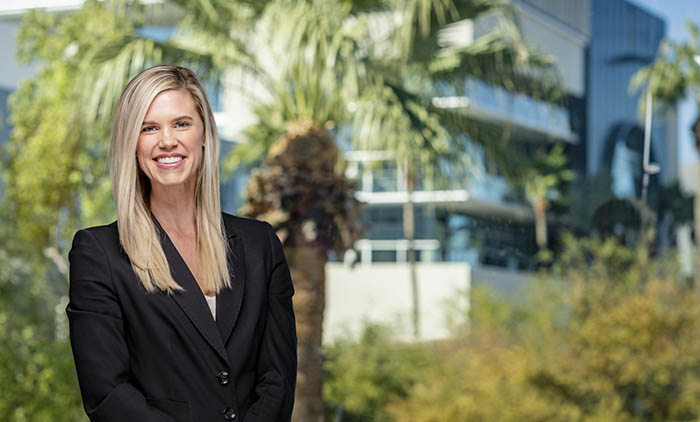
“It’s a really complex issue compounding itself over time,” said College of Education Dean Dr. Meredith Critchfield. “Teaching is inherently a very challenging job if you think about teaching 35 10th graders Shakespeare. On top of that, you’ve got social-emotional concerns, behavioral concerns, you’ve got traumas they face at home, physical health issues, not to mention all the differences in backgrounds and values.
“Then you add what I would say are divisive feelings toward teachers and education and what it should look like, and it only makes the job more difficult. What COVID did is it took the fracture that was already there for teachers and schools and deepened it. People began to take sides rather than remember the essence of teaching, which is to help students reach what God has called for them in life.”
Critchfield and her team didn’t just wring their hands. They’re working on solutions, producing thousands of teachers a year in every state in the country.
While some teacher preparation programs’ enrollments have waned, GCU’s College of Education is expected to graduate its largest class in April – an estimated 3,974 eligible for Spring Commencement.
Area schools are filling with GCU graduates, stemming the shortages and helping out in emergencies. This year, for example, the University partnered with Phoenix Elementary School District to get GCU students emergency certification to be substitute teachers, and 19 filled the role.
The University also has helped working professionals earn an alternative route to teaching through its Canyon L.E.A.P. to Teach cohorts and started a program with neighboring Empower College Prep to employ students as teaching associates.

“What we have done is make a conscious decision to be a solution provider for schools and districts,” Critchfield said. “That’s our mission, to take whatever chasm is existing and close it up by helping schools and districts get more of what they need — our quality teachers.”
It’s done by working closely with schools. “The best way we understand what is happening in schools is to partner with school districts,” said Lindy Gaudiano, COE’s Assistant Dean of Educational Partnerships and Development. “The more we can align ourselves with what the teachers are dealing with daily in their classrooms, the more it helps us to better prepare future teachers.”
West of GCU, the Tolleson Union High School District employs 40 GCU graduates in six schools.
“I don’t even need to recruit,” said Bo Oxford, Principal of Copper Canyon High School in Glendale. “(Dr.) Jim Mostofo will send me an email, ‘Hey, do you need a math teacher?’ Usually, they are ahead of the game and will be pushing them to us.”
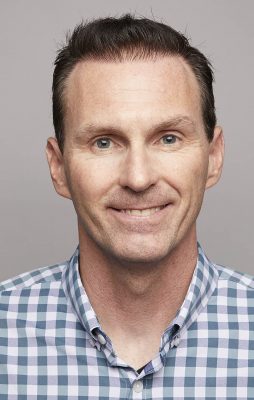
Mostofo, a GCU professor, works closely with area high schools and keeps track of GCU graduates in schools he works with — 84 in four partner school districts, including 25 in Phoenix Union. He says students need practical experience, so placing them in partnering schools for practicums and internships is a good way to get them into the pipeline of schools that need teachers.
Sam Ness is a 2018 GCU graduate who, on a recent afternoon at Copper Canyon, taught her sophomore world history class about World War II.
“Here’s what I don’t want to hear: ‘I didn’t do it,’” Ness tells her class about an assignment. She’s tough but also says privately that students may not remember everything about World War II or current issues but will remember coming to school and feeling loved and cared for.
Ness learned that sense of caring at GCU as well as the confidence that got her through pandemic difficulties. “I never felt like I was behind. I’ve been able to adapt to the technology and even teach my peers. I never thought I didn’t understand this or wasn’t prepared for it.”
That’s no accident. GCU hones its curriculum and adjusts to what the operations team hears in the field.

It’s working at Copper Canyon, where Ness often runs into more GCU grads in the hallway every day — seven in her school alone — and finds a communal bond, a background of flexible and loving approaches to education.
“There is a natural feeling of family here, of community here and purpose, and I think it blends pretty closely with what GCU’s mission and purpose is,” Oxford said.
The work continues because it’s vital that America trains more teachers. Without them there won’t be future doctors, lawyers, engineers or nurses, Critchfield said.
“Inspiration and motivation are easy because teaching is a calling. The hard part is making sure we keep them in teaching, despite the really complex layers.”
What we have done is make a conscious decision to be a solution provider for schools and districts. That’s our mission, to take whatever chasm is existing and close it up by helping schools and districts get more of what they need — our quality teachers.”
Moving the needle in nursing
Dr. Elizabeth Sambach’s journey to becoming a nurse is made up of its own complex layers.
She was in high school at the time of the Sept. 11, 2001, terrorist attacks and remembers the chaos of it — the sadness of it.
What she also remembers is how it affected one of her friends, who first heard that calling Critchfield speaks of.
“I don’t even know how to describe it,” Sambach said. “She said it scared her completely. But the firefighters and everything they went through inspired her so much that she wanted to become a firefighter.”
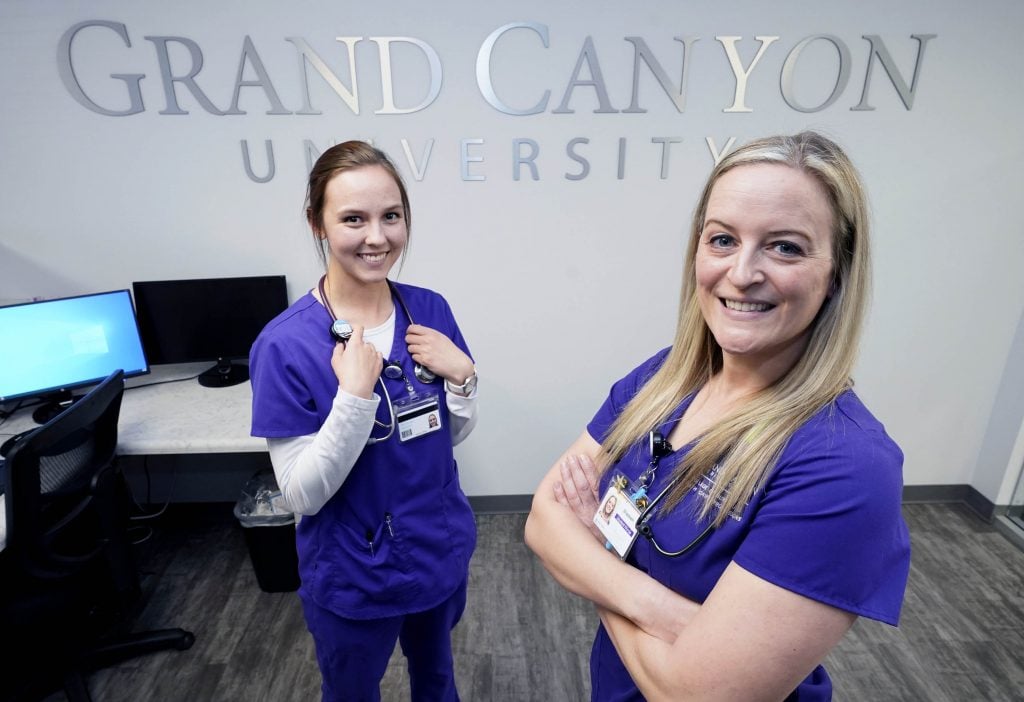
It’s how Sambach felt when she saw nurses during COVID-19, many of them stressed and exhausted but still answering that call.
“I want to be the person that’s with the patient — especially during the pandemic, you weren’t allowed visitors. People were dying without their family being able to say goodbye.
“I want to be that nurse, the last person they see. I want to be that ray of light for them.”
Inspired not just by the heroes of COVID-19 but by the cancer groups she worked with during her mother’s breast cancer battle, Sambach moved away from teaching exercise science, health and wellness, and kinesiology in higher education.
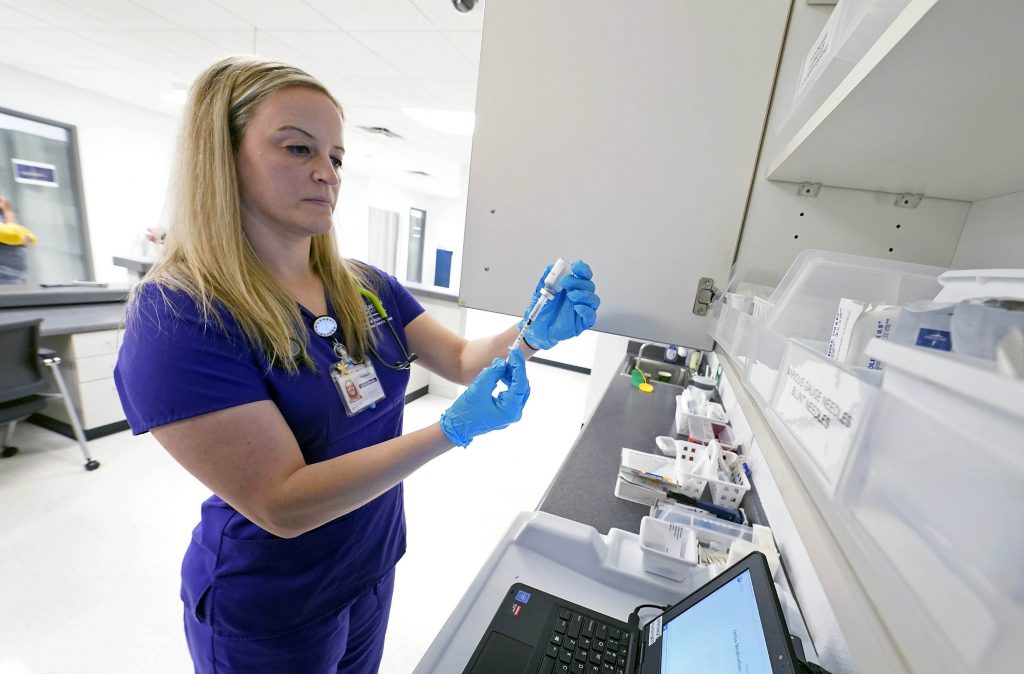
That includes shelving the doctoral degree in education for health professionals she worked so hard to earn in 2019.
In her mid-30s, she entered GCU’s Accelerated Bachelor of Science in Nursing program (ABSN), the University’s most focused effort in fighting a dire nursing shortage that preceded the pandemic and has been exacerbated by the ravages of COVID-19.
According to a May 2021 University of Augustine for Health Sciences report, 1.2 million new RN’s will be needed by 2030 to address the shortage, caused in part by people living longer and by the anticipated retirement of more than 500,000 seasoned RN’s by 2022, says the American Nurses Association.
In response, GCU opened ABSN sites in Tucson and Sun City in fall 2020.

“The big push is to continue to meet the growing nursing shortage,” said College of Nursing and Health Care Professions Dean Dr. Lisa Smith, who noted how the University is one of the largest producers of nursing graduates in Arizona – 673 graduates took the licensure exam in 2019-20.
Students in both the traditional Bachelor of Science in Nursing (BSN) and the ABSN tracks study the same material, eliminating summer breaks and completing their work in just 16 months so they can start moving into that pipeline faster.
But unlike the traditional BSN on the University’s main campus for new high school graduates, the ABSN is for students who already have earned a bachelor’s degree in another field or have prior college credits. They complete the didactic portion of their studies online and head to the ABSN site for lab and immersive simulation experiences before going to the hospital sites for their clinicals.
Approximately 280 students are currently enrolled in the University’s ABSN program in Sun City and Tucson. The first students graduated from those sites last December.
The boon of the program is that it helps students who are re-careering, like Sambach, start working in the field as quickly as possible. It also gives BSN students options.
In 2019, nursing schools turned away more than 80,000 qualified applicants from baccalaureate and graduate nursing programs because of lack of faculty, classroom space and clinical sites and preceptors, according to the American Association of Colleges of Nursing.
In the past, students who didn’t receive a spot in the BSN program would either sit out a semester and wait and reapply, apply to another nursing program or change majors.
But now the University allows traditional BSN students who have met all secondary admission requirements to enroll in the ABSN program if there are no spots available on the main campus.
It’s another way GCU is filling the nursing need, and it isn’t stopping there. The University plans to open two more ABSN locations this year in Salt Lake City and Las Vegas.
Matt Wombacher, who started the program in January, worked for 20 years in the banking and insurance industry and wanted to move into a career where he could always find a job.
He chose GCU’s ABSN program for the 16-month turnaround time and because of the nursing college’s stellar reputation.
“I think had I been making this decision right when all of this (COVID) hit, I’m not sure I would have been as willing to make this change,” he said.
Yet he sees the need in the field and the burgeoning career opportunities — and he sees the promise of brighter days beyond the pandemic.
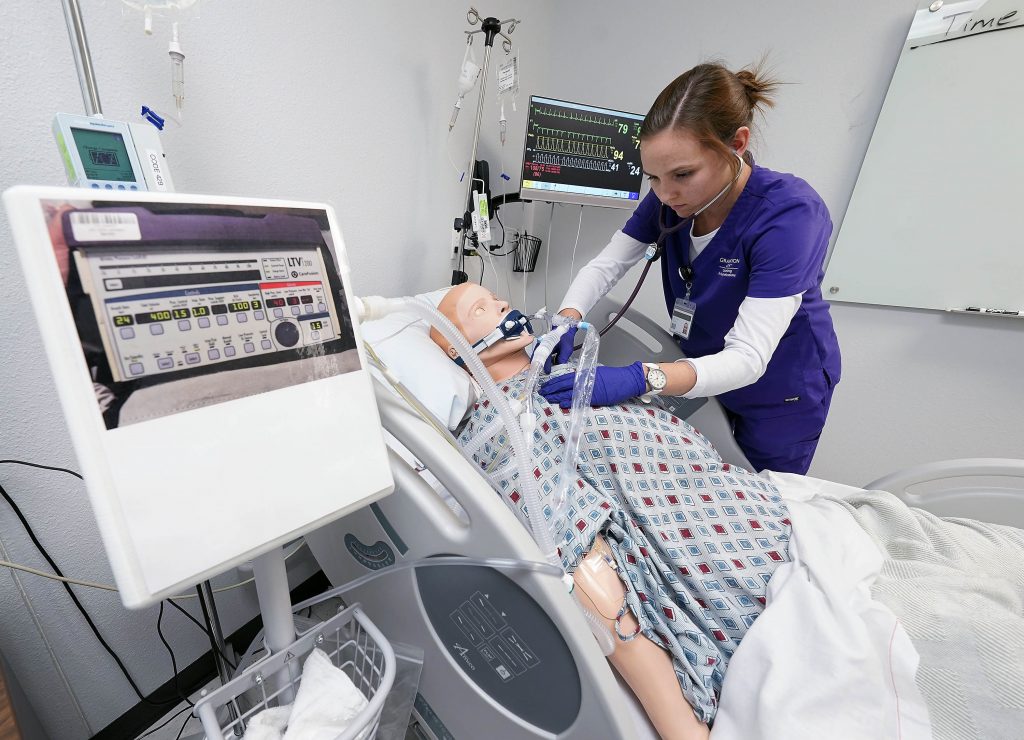
Joanna Mellor, who is at the Sun City location and expects to graduate in August, earned a degree in communications with hopes of a career in journalism or acting.
COVID changed her plans.
Going through clinicals, she sees firsthand the strain of the past three years on nurses.
“Honestly, when COVID hit, and just seeing the immense need that was out there, I was like, OK, I think this is the next step,” said Mellor, whose mom worked as a nurse. “It was something that had always been on my radar.”
Sambach, who found fulfillment working with cancer groups as her mom was battling the disease, said the thought of not working with those patients weighed on her heart.
She thought to herself, “This could be your calling, what you were meant to do.”
And after she graduates this April, just 16 months after starting her nursing journey, she’ll soon be answering that calling and helping to fill those cracks.
GCU’s teaching grads will be doing the same.
They’ll be that ray of light.
***
Related content:
GCU today: GCU students help fill need for substitute teachers
KGUN 9: GCU in Tucson helping reduce shortage of nurses
GCU Today: GCU, GCE work to alleviate nursing shortage















